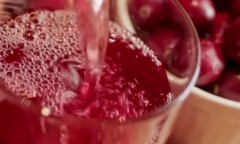By Jamie Nelson, | November 28, 2016

A study has revealed the crushing power of the Coconut Crab's deadly claws. (YouTube)
Scientists are slowly getting to grip with the severity of the crushing force behind the claws of coconut crabs found commonly in the Asia -Pacific region. A new study has examined the squeezing power of its claws which are capable of lifting a small child and crushing the sturdy shell of a coconut.
Like Us on Facebook
According to the New Scientist, the crab commonly known by the scientific term Birgus latro can measure more than 40 cm in length and weigh more than 4 kilos. Some coconut crabs have a leg span of more than a meter.
The Okinawa Churashima Foundation in Japan conducted the study to measure the crushing strength of the coconut crab's claws. The study was undertaken by a team led by Shin-ichiro Oka.
The team studied the strength of more than 20 wild coconut crabs. The crabs were gotten from the island of Okinawa in Japan and weighed 2kilos each. Oka said the main challenge was capturing the crabs as they went into a defensive mode when approached by the scientists.
The researchers held down the crabs by applying pressure on their backs. Thereafter the crabs were given a force sensor to squeeze. The scientists discovered that the strength and ability to clamp down by the coconut crabs increased proportionately according to their body weight. The highest reading recorded during the study was 1,800 Newtons.
To draw a comparison, Oka said an average forceful handshake would be 300 Newtons. A coconut crab, which weights about 4kilos, could easily exert a pressure of more than 3,000 Newtons, making it the most severe crushing force of all the crustaceans including that of lobsters that exhibit a force of 250 Newtons.
For the coconut crabs to maintain its weight and in turn pinching power, it has to consume high-calorie food including the flesh of coconuts, Wired reported. Hence the name behind the species. Coconut crabs use its claws to pull the fibers of the coconut apart and puncture a hole in the tough coconut shell to get at the flesh.
Watch the video for more information:
-
Use of Coronavirus Pandemic Drones Raises Privacy Concerns: Drones Spread Fear, Local Officials Say

-
Coronavirus Hampers The Delivery Of Lockheed Martin F-35 Stealth Fighters For 2020

-
Instagram Speeds Up Plans to Add Account Memorialization Feature Due to COVID-19 Deaths

-
NASA: Perseverance Plans to Bring 'Mars Rock' to Earth in 2031

-
600 Dead And 3,000 In The Hospital as Iranians Believed Drinking High-Concentrations of Alcohol Can Cure The Coronavirus

-
600 Dead And 3,000 In The Hospital as Iranians Believed Drinking High-Concentrations of Alcohol Can Cure The Coronavirus

-
COVID-19: Doctors, Nurses Use Virtual Reality to Learn New Skills in Treating Coronavirus Patients











